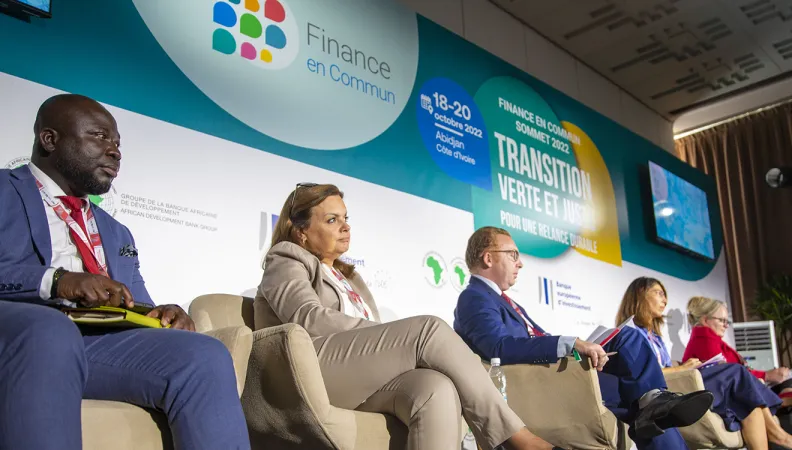Share the page
FICS Research Conference 2022: PDBs & Policy Tips for Decision-Makers
Published on

Over the past decade, public development banks have increasingly aligned their activities and mandates with the Sustainable Development Goals, but more can be done to maximize their impact. Ahead of this week’s FICS Summit, a research conference on 18 October discussed PDBs’ role in national and international finance, their contribution to efforts to fulfill the SDGs, and the work they do, and could do, in Africa. We examine some of the policy recommendations that were discussed, and which have been the subject of intense study by an international team of researchers over the past three years.
Tuesday’s conference featured not only a series of seminars on PDBs and international finance; it also saw the unveiling of an updated database of the 522 public development banks and development financing institutions worldwide, which now includes information on their priorities and policy areas, from housing and infrastructure to agricultural development.
Deepening Alignment with the SDGs
Increasingly, PDBs are backing projects that contribute to the fulfillment of the Sustainable Development Goals, a trend that the Finance in Common initiative has been working to bolster since its first edition in Paris, in 2020.
“Thanks to the first two editions of the FICS, the community of public development banks has agreed on the importance of integrating the SDGs in their activities,” says AFD researcher Jean-Baptiste Jacouton. “Now the question is, how? From a research point of view, one of the major challenges is the adoption of common methods for PDBs to report on their impacts in a harmonized way.”
Clearer, harmonized reporting would not only respond to the need for transparency and clarity, but it would also allow best practices to come to light and incentivize other financing institutions to coalesce and provide support.
Read a summary of the research seminars and all 10 recommendations
Prominent researchers from around the world have produced more than 30 papers examining PDBs and their role in the national and international financial architecture, and call for still more research to be done. We highlight six of the policy recommendations for decision-makers, ranging from ensuring good governance to the formation of innovative “development labs” and the building of international financing coalitions.
Watch the replay of the Research Conference held on 18 October:
Six Policy Recommendations
Scale up targeted capital
In the same way that governments and financial institutions injected massive amounts of capital into the national and global economies during the 2007-08 financial crisis, a post-Covid recovery will require unprecedented sums for a sustainable recovery. There are large differences between banks in terms of their financial heft. While the total assets of China’s development banks are worth well over 20% of its GDP for example, financial institutions’ assets in African countries amount to between 2% and 4% of GDP.
Monitor environmental and social impact
PDBs should adopt analytical tools to assess the impact of their financing, particularly as concerns environmental and social issues. This will also require better coordination between large, international banks and their local counterparts. “The summit will emphasize links between multilateral banks and local PDBs,” said Jean-Baptiste Jacouton. “This is crucial because the former enjoy diversified mandates and significant financial weight, while the latter constitute an essential link in the transitions due to their knowledge and mastery of local contexts.”
Boost innovation with development labs
Development laboratories or hubs would allow PDBs to conceive and define programs that contribute to anything from the protection of biodiversity and climate adaptation strategies to support for small businesses. At banks like AFD, researchers work to contribute to the evolution of their own institution, to fund innovative projects that are in line with the SDGs, particularly those that tackle inequality.
Read our series of articles on FICS 2022 (Section 4: "Further reading")
Reinforce support for climate change resilience
Central Banks and regulators should go further to incorporate sustainable development in their regulation criteria. Regulators should encourage investments that enhance climate change resilience and adaptation, for example, as well as other forms of sustainable development in the activities and mandates of PDBs.
Establish good governance and transparency
Rigorous, independent assessments will enhance the good governance of PDBs. Their boards should be opened up to members of civil society and to independent experts. Studies have shown that with support and good leadership, even poorly governed countries can have well governed national development banks (NDBs). In fact, some NDBs have evolved and undertaken reforms to restructure their internal organization and improved their governance despite relatively low institutional indices at country level.
Build global coalitions committed to the SDGs
In the same way that Finance in Common began in 2020 as a coalition for PDBs to more closely align their activities with the SDGs, banks can join forces to pursue any number of development initiatives. They can thus exchange best practices, share expertise and scale up capital to pursue ambitious projects and programs, which contribute to a green and socially just transition.
